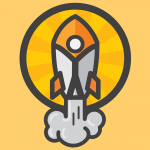Note: This article is taken from the writer Cat Neligan, in which we talked about creativity and how we can acquire it through several methods.
Whatever the situation, the good news is that everyone has the capacity for greater creativity, and it is an acquired skill.
"Creativity is any action, idea, or product that changes an existing field or transforms it into a new one," according to psychologist Mihaly Csikszentmihalyi.
The definition of creativity is broad and reminds us that it is not limited to artists or musicians; however, it requires us to influence the field in which we create. Author Ken Robinson states, "Creativity is the process of getting original ideas of value." Creativity also emphasises values.
Csikszentmihalyi claims that this definition fills in the gaps. For instance, we don't need to add much value to alter the world. Any destructive action, like smashing a window, brings about change, but it doesn't always result in a shift in value.
In short, there is no single definition of creativity. It is up to us to find an authentic and helpful definition. Accepting and developing creativity is much easier when you know your criteria.
The components of a creative skill
1. Focus on development
You have to focus on creating something, whether it's a song, a theory, a product, or a sculpture.
You can also call it “motivation;” it is the initial spark that pushes towards solving a problem or enhances the desire to use a laptop and start writing, for example. However, it is worth noting the different stages of the creative process: the divergent stage and the convergent stage.
In the divergent stage, we want a broad focus so that we are ready to allow in many different inputs, ideas, and insights; this is the time to brainstorm all possible ideas and solutions.
In the convergent stage, we start to reduce our focus like a camera lens, so we focus on a set of ideas or solutions, distinguishing between them during the process.
How do you develop focus?
Take a 20-minute walk: Walking and raising your heart rate is the best free tool to regain focus.
Taking a break during busy times can seem counterintuitive, particularly if you're tackling a long list of tasks. However, the positive impact on concentration and mental clarity is undeniable.
Physiologically, walking has been shown to relieve stress and help mental clarity, so if you try this technique, you will find that you are more productive than before; you get some rest.
Over time, if you walk every day, you will quickly find that your to-do list has become much less essential and more doable. It is all about keeping a sharp focus, and short daily walks will guide you in this direction.

2. Follow a specific system
When I wake up every morning, I start the day with a specific structure in mind. I will devote 15 minutes to meditation, 30 minutes to coffee and reading, 20 minutes to yoga, and so on.
Although the system followed in this morning's program may be boring, each task implementation is creative at some level.
The goal of the structure is to give you the space to dedicate time to something you want to do and to help you save time to do your creative work. Once you start this thing in itself, you are free to do it however you want.
We may lose focus without a structure and drown in the plethora of possibilities; how easy is it when given some guidance or deadline?
The secret is to figure out how much structure is appropriate for you and your creative requirements. Large structures impose constraints and repress us, while small structures overwhelm us.
Again, it is worth thinking about creativity at these two stages: divergent (less structural) and convergent (more structural).
How to build a structure?
Create a morning routine: You don't have to fear waking up because your morning routine doesn't have to be so strict or demanding. The opposite should occur; once you find a routine that suits you, you'll look forward to getting out of bed in the morning.
We all have different needs and preferences that can shape our ideal routine; author Mason Currey's Daily Rituals: How Artists Work inspires readers with more than 160 daily routines for creatives, from Charles Darwin to Pablo Picasso.
Try anything you like, and see how it feels to have a little structure to start your day with.
3. Search for motivation
One theory states that people are more creative when they feel motivated through interest in the work itself and the feelings of satisfaction and challenge it evokes in them rather than through external pressures; this is known as intrinsic motivation, and it comes from within.
Consider an instance when you produced your best work. It seems like you were totally focused on what you were doing and didn't care about anything else. You were involved in the assigned task and hardly noticed the time passing.
Now, think about a time when you felt pressure to perform. Maybe it was an exam, meeting an important request, or your boss telling you, “A lot depends on this.”
Did you notice the difference? I was in the first situation motivated by intrinsic motivation, which made it relatively easy, and even fun, to have a lot of creativity.
But in the second situation, the extrinsic motivation was controlling and distracting you by whispering to you about the rewards of success and the dire consequences of failure, making it more challenging to focus on the task at hand.
For this reason, intrinsic motivation, if you can find it, distinguishes good work from great creative work.
But this does not mean that only internal motives help. I get an incentive to have coffee at my favourite coffee shop to entice myself to work. That will allow me to write, revise, or do anything else I have avoided.
How do you find motivation?
Be in direct contact with the target.
The end is your fuel: what pushes you forward and excites you to desire to do your job.
As the German philosopher Friedrich Nietzche puts it, “He who has a purpose for living can endure almost anything.”
When you desire to do something, a goal, or a purpose that interests you, you can relate your daily actions to it. After that, each action becomes saturated with meaning, and you find that the inner motivation comes naturally.
The trick is to remember your purpose and communicate with it regularly.
Think about how you want to feel every day and what you want to achieve next year. And what do you want for yourself in the next five years? What do you want in your life?
If you follow this path, eventually, the daily tasks, or at least some, will be linked to a greater goal. You will find you are more motivated to create and face less resistance.

4. Gain experience in a specific field
Research has shown that expertise in one field does not mean expertise in various other fields, and creativity in one field does not mean creativity in another unrelated field.
Being able to paint a beautiful picture does not mean that you can solve a mathematical problem creatively.
Unfortunately, receiving high marks on a creative thinking test, like the Torrance tests, which require you to consider extensive pencil use, only serves as a proxy for divergent thinking abilities rather than a general measure of creativity.
The good news is that you can train your creativity in the field of your choice, just as when you want to strengthen a specific muscle, you choose one exercise without the rest of the exercises.
Of course, you can still do a full-body exercise or “full creative exercise,” but that means creativity training exercises should come from various fields, not just thinking about pencil use.
How to Become an Expert?
Create a training plan that helps you master: Creativity can be likened to physical exercise, as it is worth applying the habits of great athletes in your chosen creative field; for example:
- Select the area (s) you want to work on: Just like a tennis player deciding to improve their serve, you can select the region within your creative field that you want to improve, so be specific.
- Decide how much time you can devote: Most of us don't have all day to practice like a professional tennis player, but you can push yourself and devote 20-30 minutes a day if you need no matter how much time you can commit, decide to dedicate yourself to the activity you're doing.
- Evaluate your progress: Finally, you can check your progress with periodic reviews. Select the metrics you want to adopt and set aside weekly time to check in with yourself.
How many days have you been active? How much progress are you making compared to last week? This kind of review can help you stay on course and actually increase your intrinsic motivation as you see your own growth.
5. Creating an enabling environment
In 1943, a psychologist observed that behaviour is contingent upon the person engaging in it and the physical setting in which it takes place.
I propose that creativity is a behaviour heavily influenced by, even dependent upon, our environment, even though it starts as an internal process.
I began to notice how the environment affected me when I worked in the office. Over time, I realized that the more people were present or talking, the more distracted I was. When I got to the office early before my co-workers arrived, I was twice as effective.
I was also more productive at home, and now that I work from home, I've discovered that there are certain cafés where I can be more productive, especially those with high ceilings, lovely lighting, soothing background music, and great coffee.
These tiny differences in our environment can really shape our creative production.
If you're introverted, you're probably doing your best work alone, but if you're sociable, you're probably doing your best work in the company of others.
That doesn't mean you have to find one way to do things and stick to them. Changing your environment occasionally is a great way to get creative.
How do you create an enabling environment?
Remove some stimuli and add others: It has been demonstrated that regeneration in our surroundings triggers the release of dopamine, a neurotransmitter that heightens our drive for rewards.
If you're looking for creative motivation, add some rejuvenation to your environment, as this may be just what you need.
However, some people find it difficult to focus because they are very sensitive to high motivation levels in their surroundings.
Try working in different environments, observe how you feel, and see if you do better creative work or have more exciting ideas alone or with others. Try listening to music, conversing with people, or staying in complete silence, working in a room that is sometimes dimly lit, sometimes in bright sunlight.
In each case, note how you feel before, during, and after; evaluate the quality of your work.
In conclusion
Creativity is not a particular skill or talent one can possess; it comes in many and varied forms.
Take small steps daily to be more creative, learn where and when you feel inspired, motivated, and authentic, and put more energy into those areas where you want to be creative.






Add comment